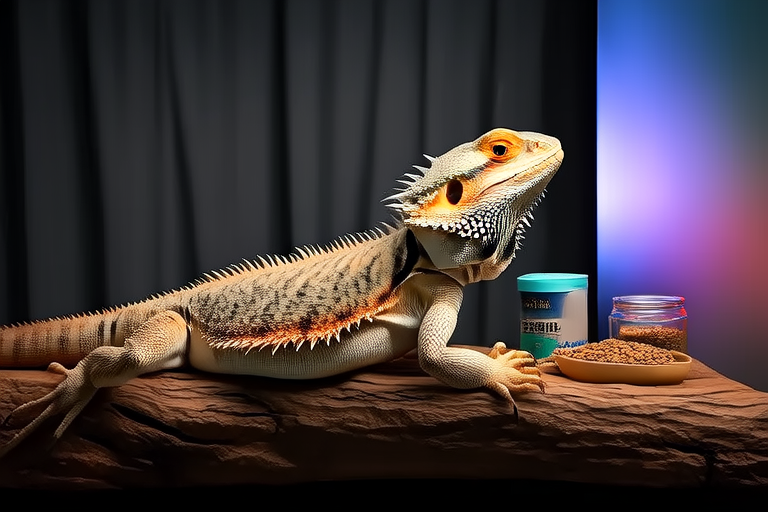Ultimate Guide: Caring for Your Bearded Dragon Like a Pro
Welcome to the world of bearded dragon ownership! These fascinating reptiles require specific care to thrive. This comprehensive guide will help you create an optimal environment, ensure proper nutrition, and maintain your pet’s overall well-being.
Step 1: Habitat Setup
Your bearded dragon’s habitat is crucial for its health and happiness. Start by choosing an appropriate tank size; for an adult, a 40-gallon breeder tank or larger is recommended. Ensure the enclosure has a secure lid to prevent escapes.
Substrate choice is vital. Avoid loose substrates like sand, which can cause impaction if ingested. Opt instead for paper towels, reptile carpet, or non-particle bedding. The enclosure should have multiple levels, allowing your dragon to climb and bask. Include branches, rocks, and hides for enrichment.
Maintain humidity levels between 30% and 40%. Proper ventilation is also key. Place the tank in a quiet area away from direct sunlight and drafts.
Step 2: Temperature and Lighting Requirements
Bearded dragons need a basking spot with temperatures around 95 to 105 degrees Fahrenheit during the day. The cooler side of the tank should range from 75 to 85 degrees. At night, temperatures can drop to 65 to 75 degrees.
Use a reliable thermometer to monitor these temperatures accurately. A ceramic heat emitter or under-tank heater provides consistent warmth. Position a UVB light over the basking area for 10-12 hours daily, mimicking natural daylight cycles. UVB rays are essential for calcium absorption and overall health.
Step 3: Diet Specifics
Bearded dragons are omnivores, requiring a balanced diet of insects and vegetation. Offer crickets, dubia roaches, and mealworms as protein sources. Gut-load feeder insects with nutritious food before feeding them to your dragon. Dust these insects with a calcium supplement every other feeding and a multivitamin weekly.
Vegetables such as collard greens, mustard greens, and squash should make up half of their diet. Fruits can be offered occasionally but in moderation due to their sugar content. Always wash and chop vegetables into bite-sized pieces before serving.
Step 4: Hydration Methods
Provide fresh water daily in a shallow dish. Monitor water intake closely, especially during shedding periods. Misting the enclosure once or twice a week helps maintain humidity and encourages drinking. Some dragons may drink from the misted surfaces.
Step 5: Health Care Tips
Regular vet check-ups are essential for early detection of potential issues. Watch for signs of illness, such as lethargy, loss of appetite, or changes in feces. Clean the enclosure weekly to reduce bacteria and parasites. Use safe cleaning products designed for reptile habitats.
Step 6: Handling Techniques
Handle your bearded dragon gently, supporting its body fully. Approach slowly and allow it time to become comfortable. Wash hands before and after handling to prevent transferring harmful bacteria.
Step 7: Common Mistakes to Avoid
Avoid keeping multiple bearded dragons together unless they are siblings, as aggression can occur. Do not use unsafe substrates that pose ingestion risks. Overfeeding can lead to obesity and related health problems. Ignoring hygiene practices increases the risk of disease.
Conclusion
Caring for a bearded dragon is rewarding but requires commitment. By following this guide, you’ll provide your pet with a healthy, stimulating environment. Remember, each bearded dragon is unique, so observe their behavior closely and adjust care accordingly.
For more detailed information, consult reputable books or websites dedicated to reptile care. Stay informed about advancements in husbandry practices to continually improve your pet’s quality of life.
